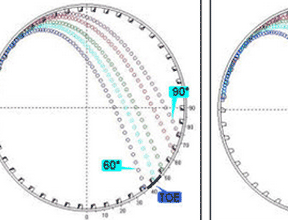Abstract
An evaluation was made of the wear and performance characteristics of lifter bars, and the cost-life effectiveness of backing materials for rotary-mill liners.
In a large run-of-mine mill in which the lifter bars were mounted on grid liners of austenitic manganese steel (AMS), the liners had an average life that was five to six times that of equivalent unprotected liners. For a single mill, this is equivalent to annual savings in the cost of materials of up to R320 000, and to a downtime of 100 hours.
Of the five materials tested in a large pebble mill grinding quartzitic ore, AMS grids and 'white iron' blocks performed best on a cost-life basis, with possibly improved performance from a real white cast iron. (The 'white iron' was shown by microstructural analysis to contain flake graphite and pearlite, being in reality a grey cast iron.) The high-chromium white iron had by far the longest predicted life, with mild steel a surprising second. Rubber was shown to last well in this type of mill.
The wear rates of liners change during their lifetimes, The protective effect of lifter bars was clearly illustrated by the reduction of over 40 per cent in the wear rates of the liners when the lifter bars were renewed to a height of 80 mm from a fully worn height of 35 mm.
Reference
J.S Afr. Inst. Min. Metall., vol91, no 2. Feb 1991. pp. 63-75
